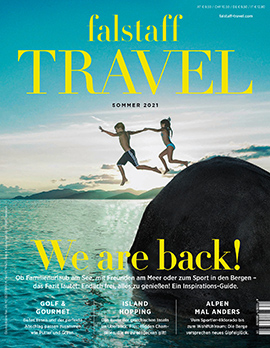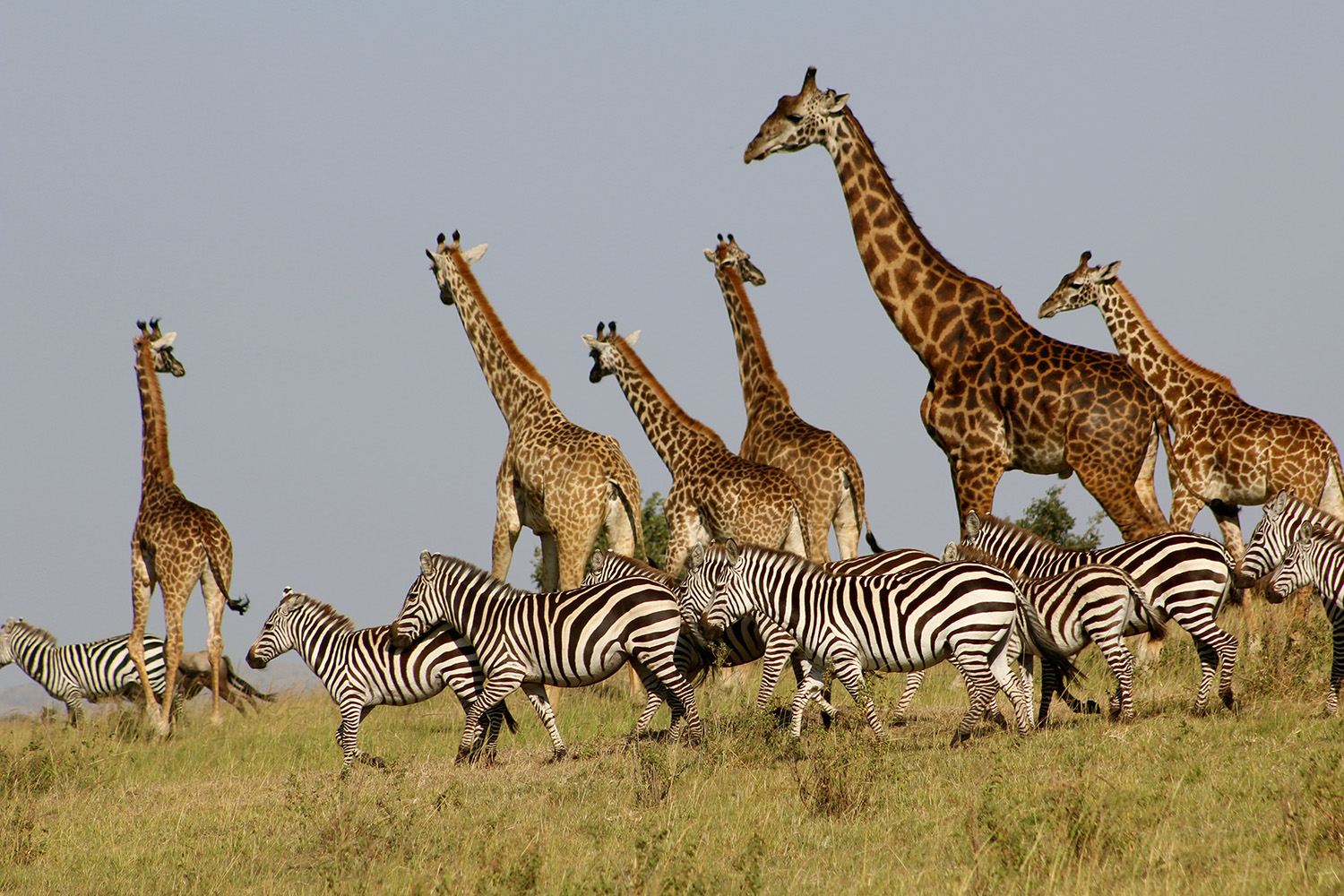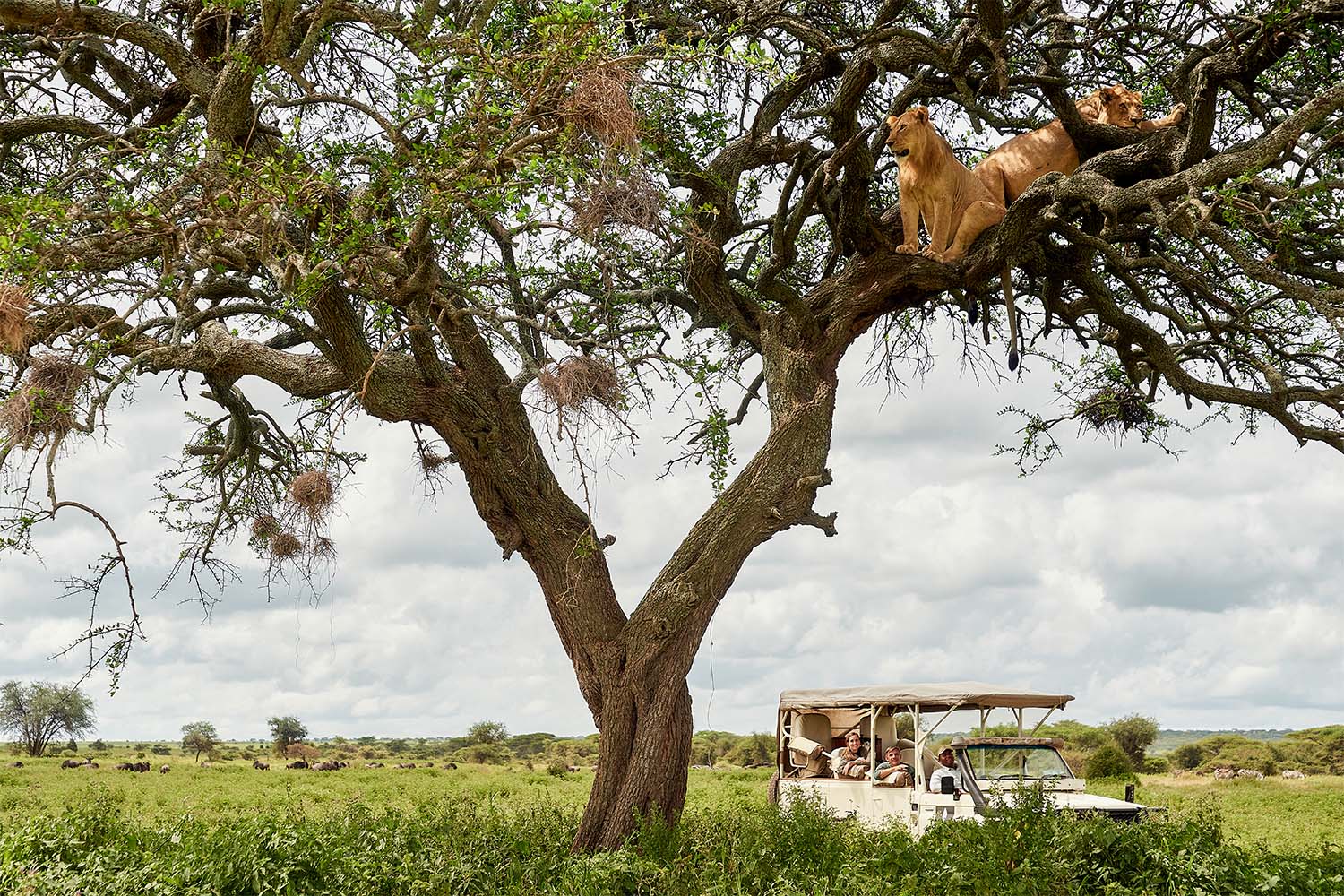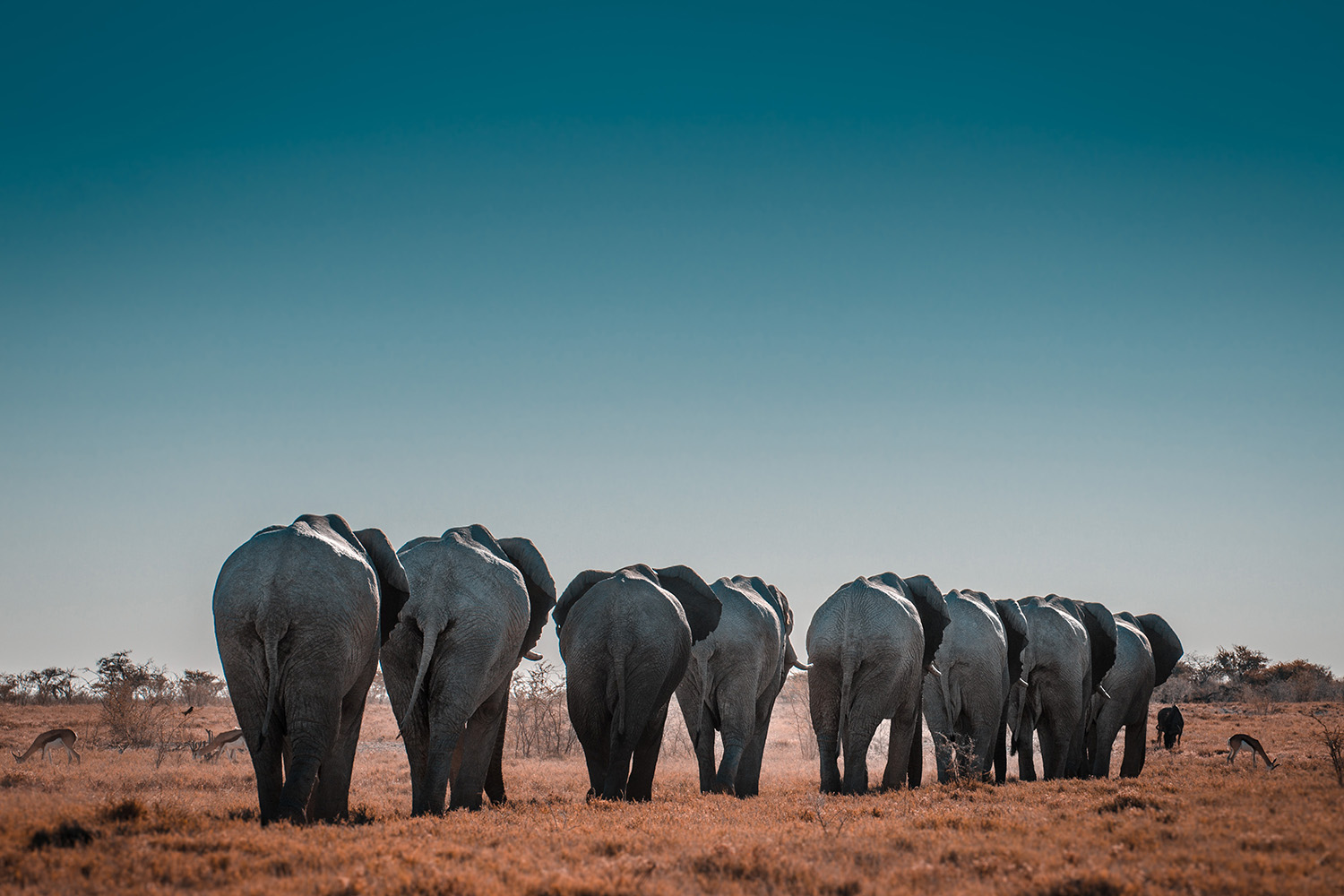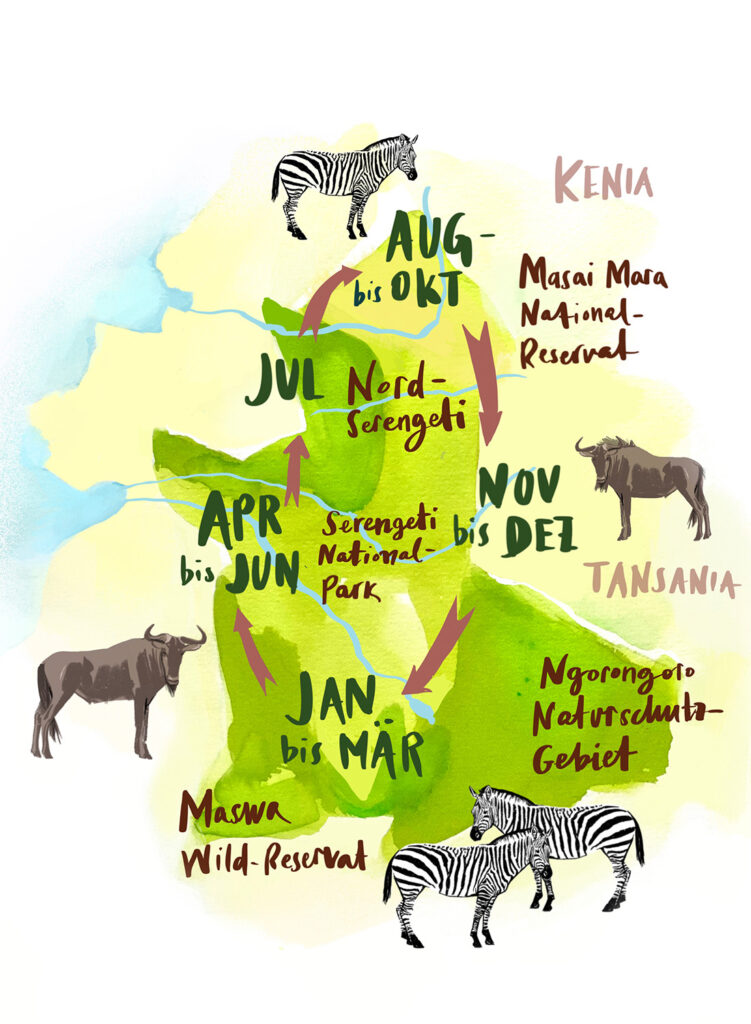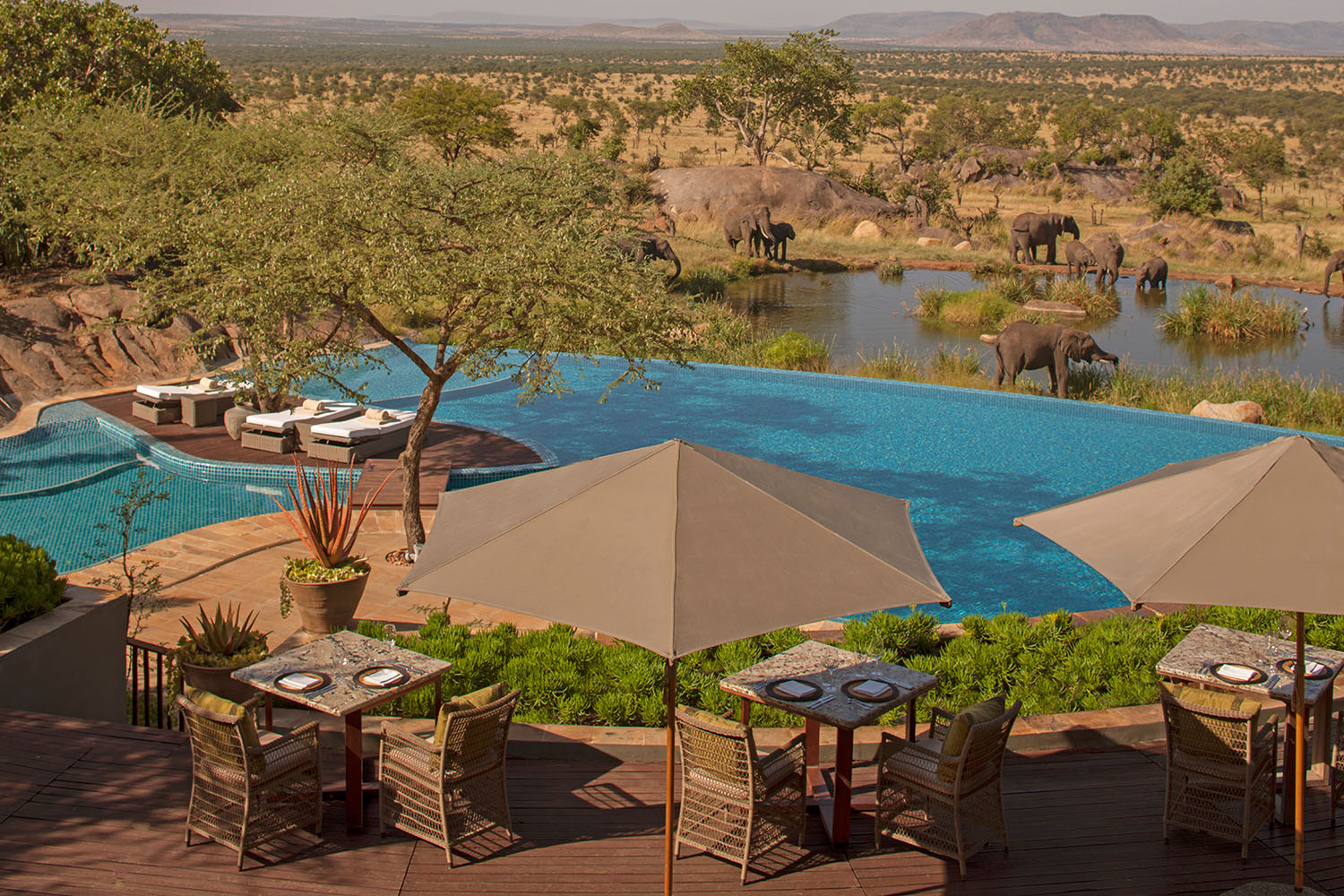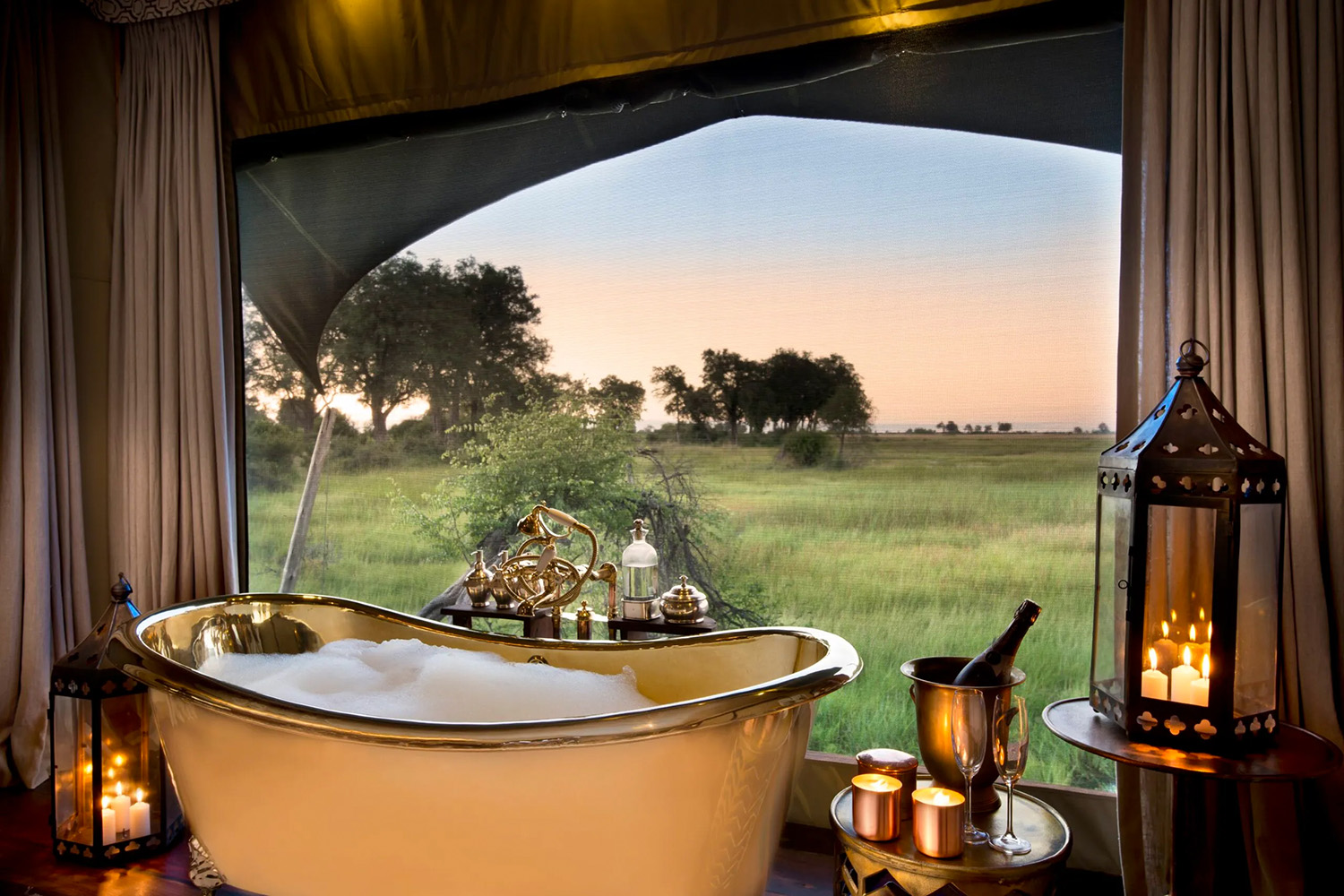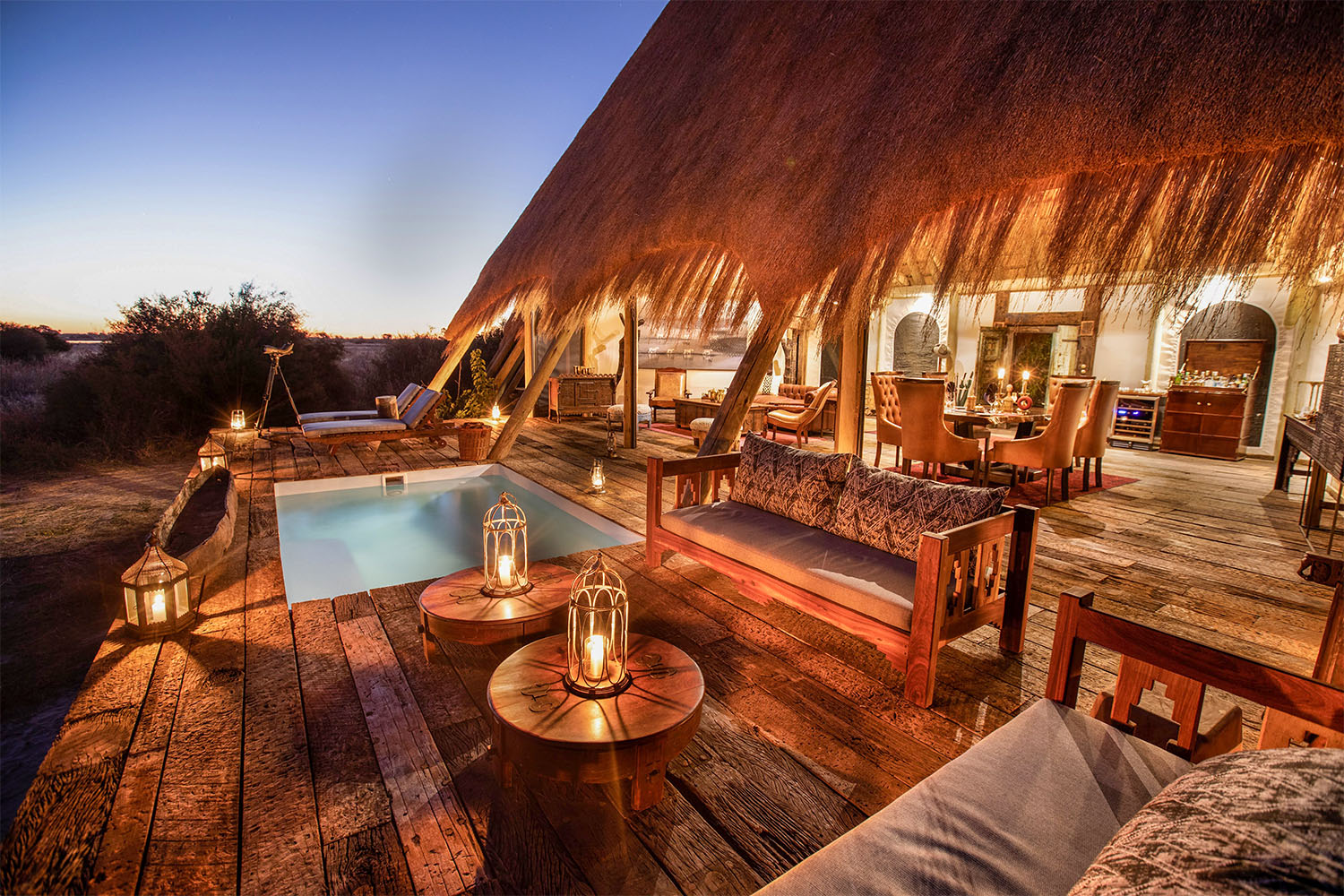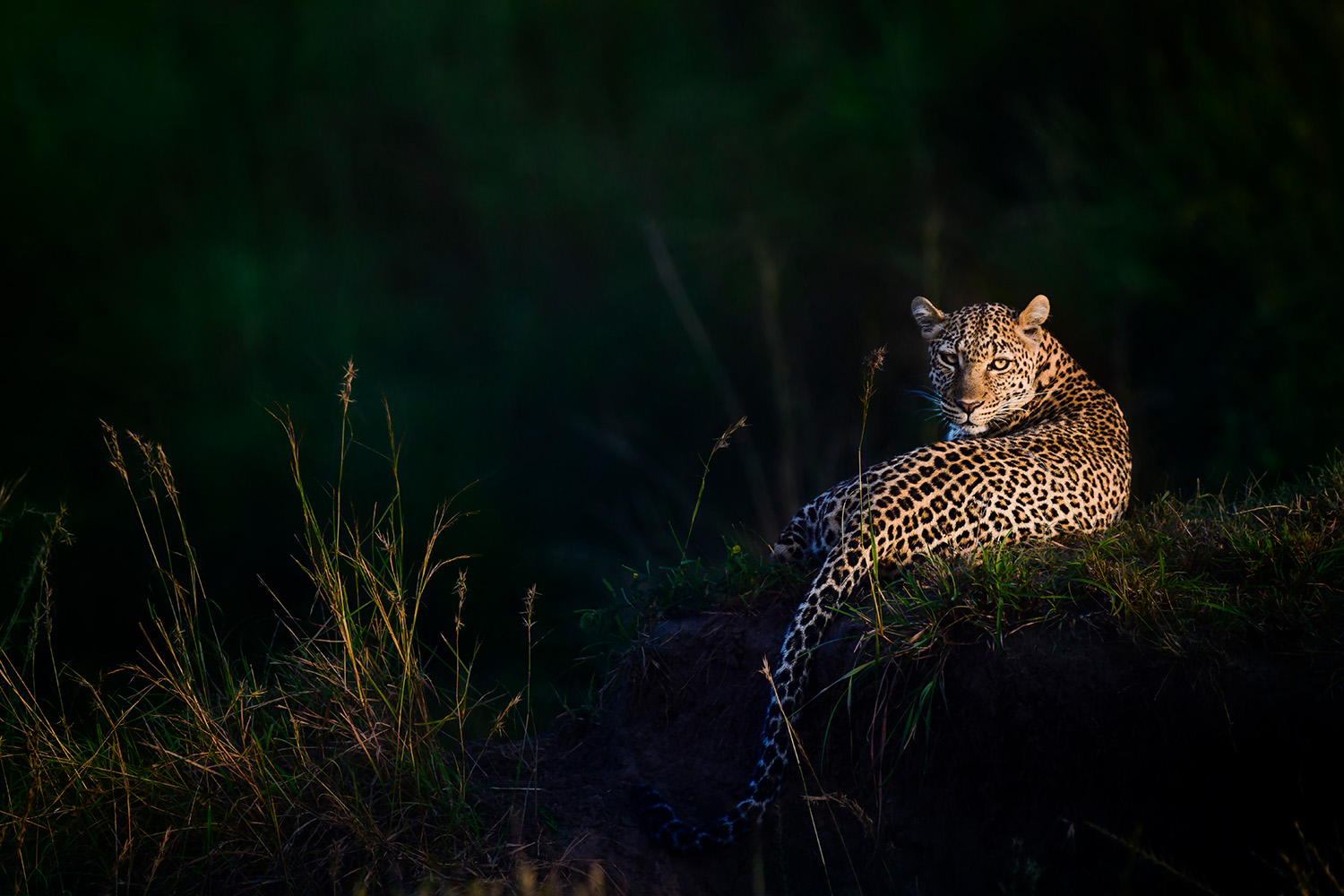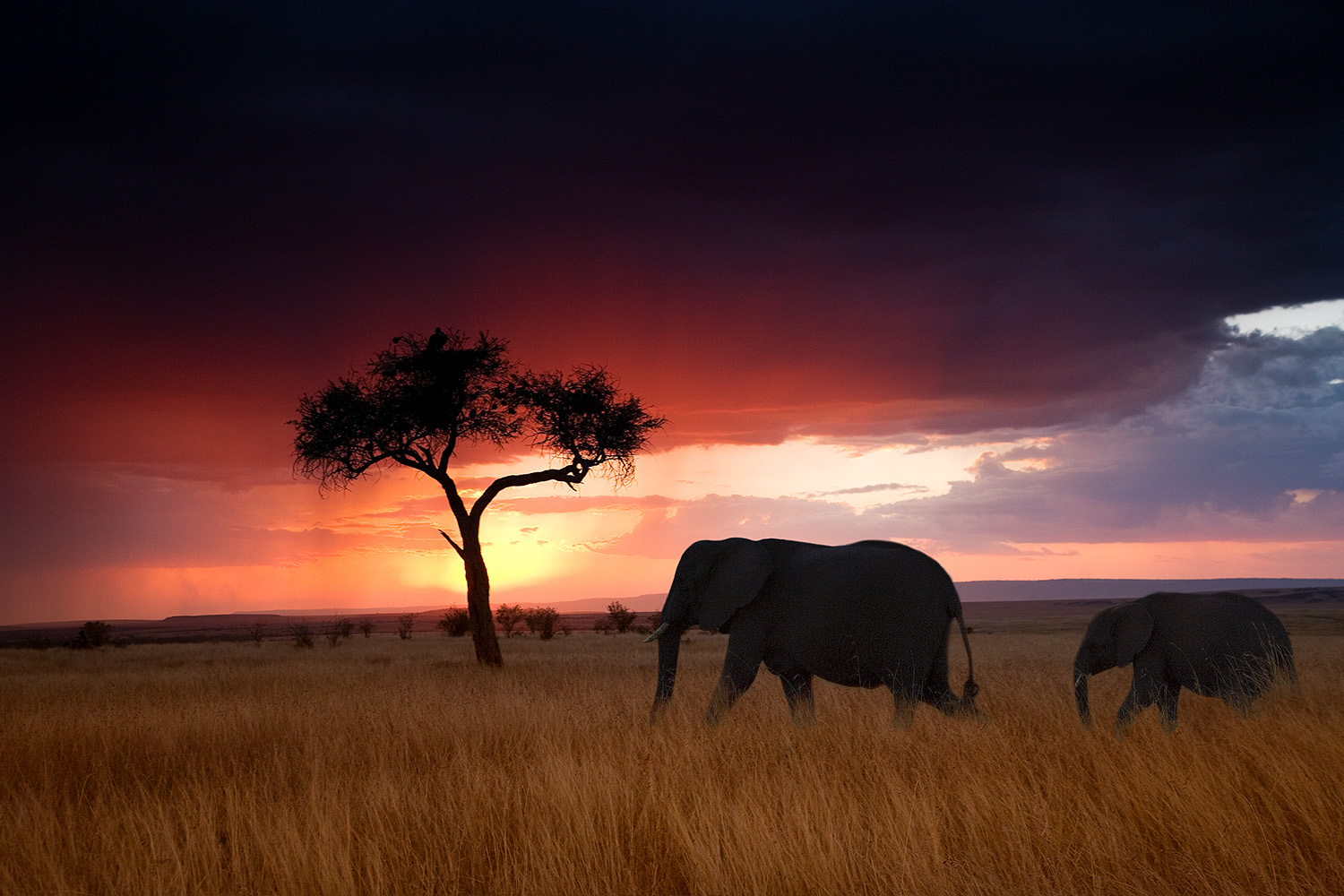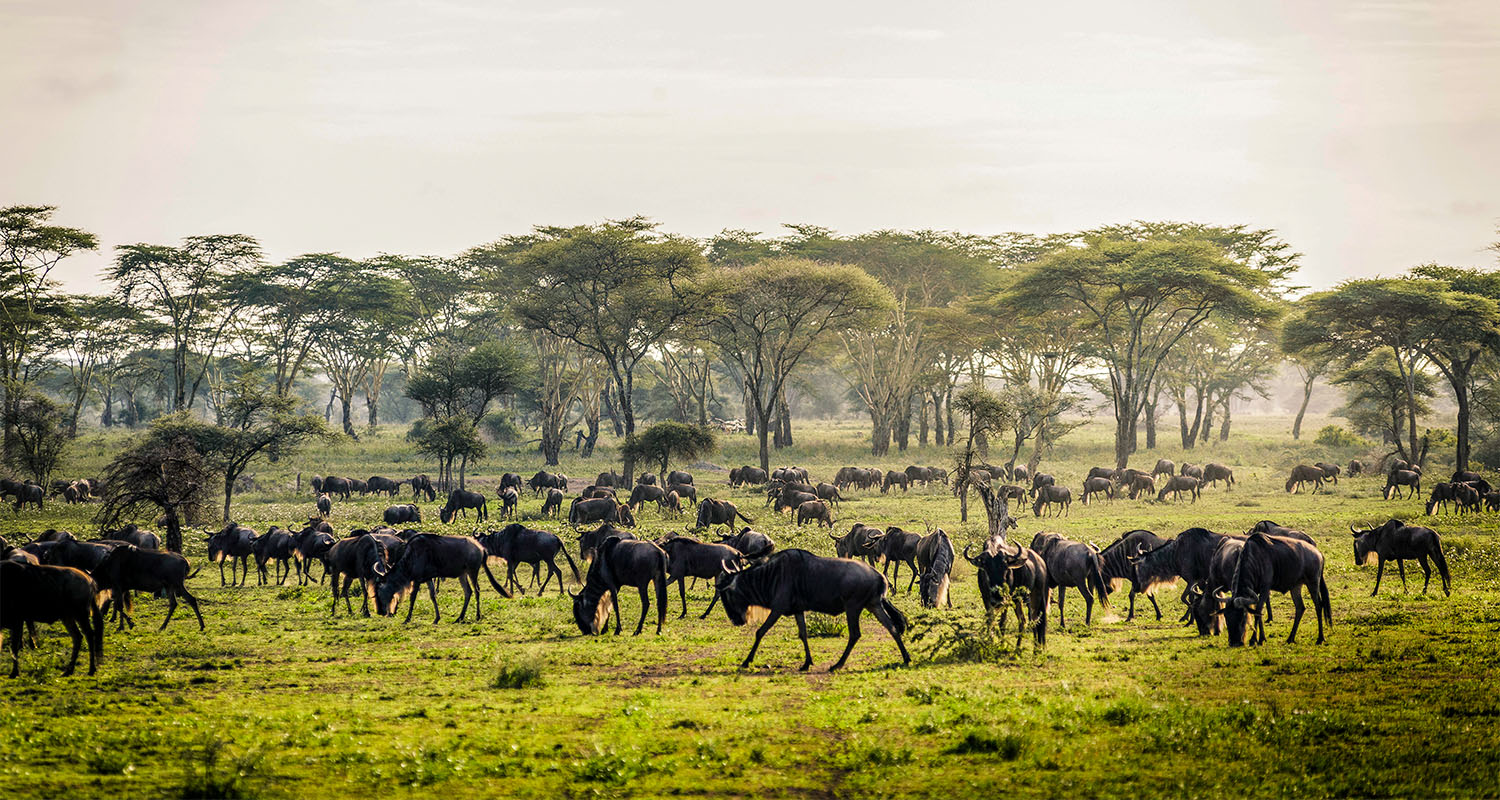
The Great Migration: A Walk on the Wild Side
When about 1.5 million wildebeest and 250,000 zebras plunge fearlessly into the swiftly flowing current, one of the most spectacular phenomena of the animal kingdom reaches its climax: witnessing the Great Migration is an unforgettable experience. As is a stay at a luxurious safari camp.
August 8, 2022
At first glance, the change is barely palpable, but then the guides’ excitement rises as the Serengeti Bushtops Luxury Camps Jeep slowly approaches southern Kenya’s Mara River in the early morning hours. This is the big day, of that they are certain. Today the wildebeest, zebras and gazelles will finally start moving and make their way across the river, after holding out on the bank for the past several days. The safari guests, too, can sense that something’s about to happen. There are only four of them per vehicle to ensure an unobstructed view and leave enough room for their photography equipment.
The spectacular animal phenomenon amazes visitors on safari. © Unsplash
And then, the first wildebeests brave the water; muscles clenched, they plunge into the stream. Over the next several days, thousands of their fellows will follow their lead. The animals’ tension is justified: for many of them, the plunge will inevitably lead to their death, as countless hungry crocodiles are waiting in the river to claim their prey.
The dangers that lurk: predators like big cats and crocodiles are a constant threat to the migrating herds. © Sanctuary Retreats
Hold your cameras ready
Not all of the roughly two million animals that set off in the south of the Serengeti in Tanzania for the north of the Masai Mara in Kenya at the beginning of the year in search of food and water are still moving at this point – the Mara is the second dangerous river crossing along their route. Sooner or later, all the animals that survived the first hurdle will arrive at one of roughly ten crossing points along the Mara River.
African elephants have larger ears than their Asian counterparts. They help them better endure Africa's high temperatures. © Unsplash
Here, travellers from around the world eagerly await their arrival, hastily clicking the shutter buttons on their cameras in the hopes of capturing as many spectacular scenes as possible. But they’re not the only ones looking forward to the migrating animals’ arrival – their natural enemies are pleased to see them too. The lucky ones that make it to the other side alive can take a well-deserved breather on the green plains of the Masai Mara for a couple of weeks. Only when the dry season in Tanzania ends, which is usually some time in October, do the animals begin the return journey south.
A never-ending journey: wildebeest and zebras never stay in one place for long before embarking on the next stage of their journey. © Illustration: Blagovesta Bakardjieva/carolineseidler.com
After witnessing this unparalleled spectacle of nature, the watchful observers of the Great Migration head back to the lodge, where a hearty breakfast awaits them. In addition to morning and evening expeditions, guided tours are offered during the day. The guides are an endless source of knowledge about life in the bush, and will happily share it with interested guests.
If you thought that safaris couldn't be glamorous, you've clearly never stayed at one of the luxurious lodges. © Richard Waite
But how they manage to spot even the most well-hidden animal – from a distance – will forever remain a mystery. Finding yourself in such proximity to wild animals and witnessing life and death up close doesn’t just give you goosebumps and create unforgettable memories – it also calls for a relaxing alternative program to help calm your nerves.
Safari from the tub: as the camps harmoniously blend in with nature, you can watch many animals casually pass by your tent. © Andrew Howard/Great Plains
Moments of indulgence in the bush
There are plenty of ways to relax and to be pampered at the Serengeti Bushtops Luxury Camp . Here’s one: climb into the hot tub on the terrace, gaze off into the vast expanses and feel your muscles release their tension – locals refer to the rides on the Jeep as the “bushman massage”, which, despite the comforable interior, can be quite a shake-up
Luxury in the savannah: countless lodges in Africa are living proof that you don’t have to forego luxury on the African plains. © Andrew Howard Photo
The rocky hills surrounding the camp are a welcome refuge for many animals, so it’s not unusual at all to see elephants, buffalo, giraffes and even crocodiles casually strolling by. But not to worry, if you encounter a wild animal, it’s best to just stay calm – and if you’re cool enough, grab your camera and snap a picture of the surprise visitor to share with friends and family. Here’s another tip: before embarking on a walking safari accompanied by a local tribesman in the afternoon, say, treat yourself to a soothing full-body massage. But don’t settle for just anything: there’s a wide array of relaxing treatments for guests to choose from.
Top-notch hunters: leopards are excellent climbers, and they can bring down animals that are double or even triple their weight. © Getty Images
A memorable change of perspective
The moment you retreat to your spacious tent and fall into your cosy canopy bed you’ll know for certain that a wilderness stay in Africa can be a decidedly luxurious experience. Or would you rather sip a cocktail at the elegant bar before in- dulging in fine haute cuisine during a quiet candle-lit dinner? The lodge offers all that and more, including round-the-clock butler service: someone to draw you a bath at any hour of the day, neatly fold your clothes and cater to your every need.
African elephants: the clever pachyderms have adapted to a variety of habitats. © Getty Images
A spectacular safari trend has been sweeping through the luxury camps: an early morning ride in a hot air balloon that lets you observe the migrating animals from above. See- ing the endless expanse of the Serengeti from that perspec- tive is an incredibly humbling experience. Guests often muse that it makes them view the beauty of nature, the animal kingdom and life in general in a wholly different light. And it’s one of the many moments that you’re bound to remem- ber for a long time to come.
Good to Know
- During the Great Migration, wild animals move in search of food and water across the savannah from the Serengeti plains in Tanzania to the Masai Mara in Kenya and back again. It’s the largest migration of mammals on land.
- Wildlife is always on the move in Africa, but the river crossings are truly remarkable and safari fans will be rewarded with breathtaking scenes.
- The cycle for the Great Migration is dictated by the rainy season, which depends on a variety of factors, so the timing differs from year to year.
- Calving season is an often underrated time for safari trips: during these weeks, you get the rare opportunity to witness the first days in the lives of wildebeest calves.

This article appeared in the Falstaff TRAVEL issue Summer 2022.
